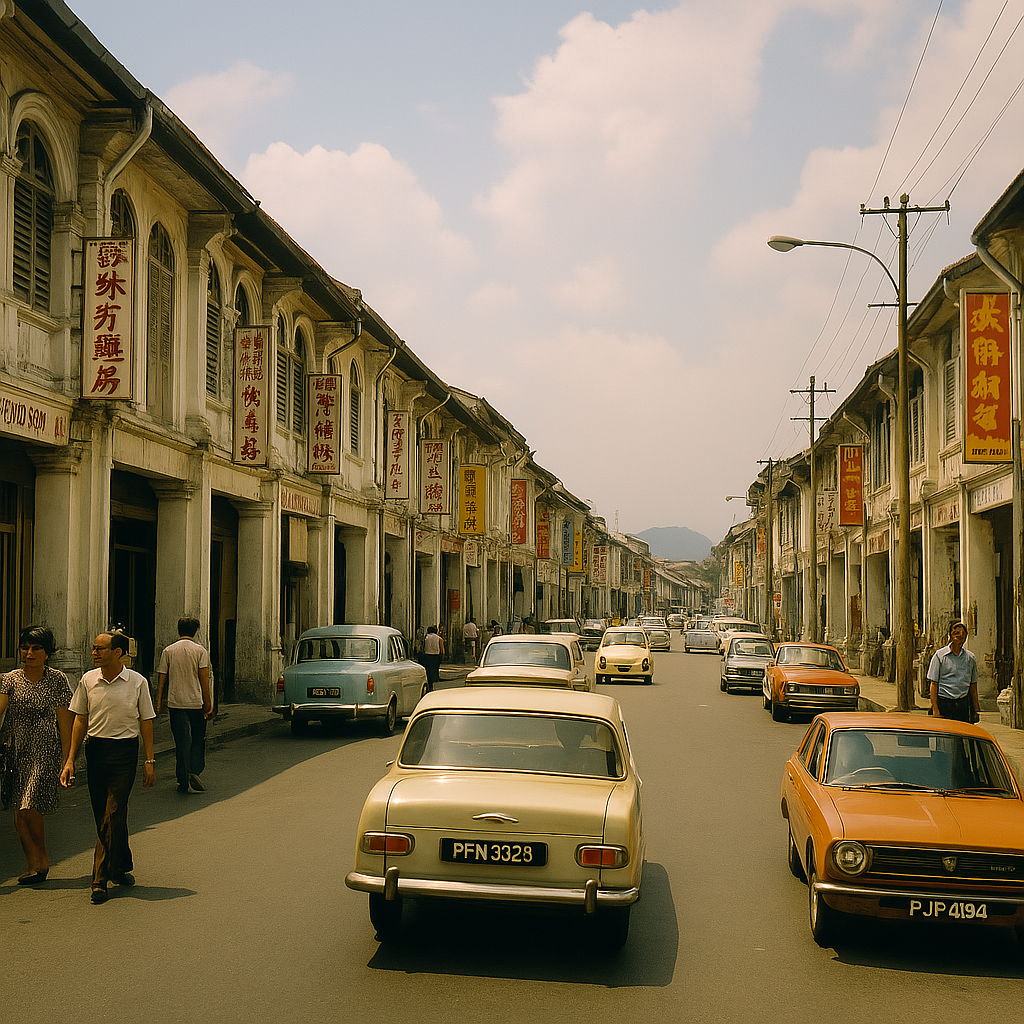
(This AI illustration was created by Microsoft’s CoPilot)
by Dr Rahim Said
Let’s rewind to 1974, shall we?
George Town back then wasn’t the bustling UNESCO heritage Insta-heaven it is today. Nope. It was a sleepy hollow — and I don’t mean the one with headless horsemen unless you count some of the over-enthusiastic towkays after their third bottle of Martell.
Back in the day, the boys from Kuala Lumpur would descend upon Penang every weekend like migratory birds — except these weren’t after seeds and worms. No, sir. They came for char koay teow, nasi kandar, and a spot of mischief at two of the island’s finest establishments.
If you were anyone (or even no one pretending to be someone), you’d end up at the Merlin Hotel (now the City Bayview) where the Alleycats played to crowds so raucous, even the chairs danced.
And if you fancied a place to see and be seen — and possibly seen again the next morning when you tried to remember her name — you headed for Gypsy Caravan at the old Rasa Sayang in Batu Ferringhi. It was where the young and beautiful mingled with the young and hopeful.
Life was delightfully uncomplicated. You worked (or pretended to) by day, partied hard by night, then repeated it all until someone’s liver gave up. Not much else happened, really. George Town was quiet, content in its own sleepy rhythm — until I met him.
He was a senior civil servant with a penchant for ballroom dancing and whisky soda. An old-school Anglophile in his late forties who insisted on speaking the Queen’s English with a Cockney accent — a combination that made locals wonder whether Her Majesty had started selling fish at Billingsgate.
He lived in a government quarters, a stone’s throw from Merlin. Our afternoons were spent sipping tea at the E&O Hotel, Somerset Maugham’s old hangout, watching ships crawl into Penang harbour like lazy whales. Steamboat by the sea was another ritual, where the only real drama was whether to dip the prawns or the fish balls first.
But night-time was a different beast. Next to the E&O was a cabaret — not your Broadway kind with feather boas and tap numbers. This was Penang’s own rough-and-tumble watering hole for towkays with cash to burn, dance hostesses with moves for hire, and whisky by the pail. It was the rather tantalising and raucous Latin Quarter!
It’s where I learned two crucial survival skills: how to cha cha and how to count to four in Mandarin before belting out Wooly Boolly, a song made famous by that Tex-Mex band called Sam the Sham & the Pharaohs.
Now, our dear civil servant fancied himself a waltz man. The problem was, that the hostesses only spoke Hokkien. And he — having spent too long practising his Mary Poppins accent — was baffled.
Enter yours truly and my trusty old schoolmate. Our weekend assignment? Source three single ladies who could dance the cha cha, waltz, and — most importantly — hold a conversation in passable English.
It worked like a charm. Until one weekend, disaster struck.
The old man took a shine to a lovely girl we brought along. He danced with her like Fred Astaire possessed by a minor stroke, whispering sweet nothings in Cockney English.
Trouble was, she kept glancing at me, entirely confused. Turns out she was from Bukit Mertajam and spoke about as much English as a durian tree.
Jealousy brewed. Tension rose. I had to step in, before the old boy burst a vein.
“Boss,” I explained, “she’s Hokkien-speaking. She thought you were ordering chicken rice (“kay pooi” in Hokkien).”
The moral of the story? In 1970s Penang, it didn’t matter if you had a crisp accent, a government pension, or a pair of imported suede shoes. If you wanted to thrive in the cabarets of Georgetown, you needed to cha cha, count in Mandarin, and yell Wooly Boolly at the right cue. More importantly, you had to know your “kay pooi” from your char bee hoon (vermicelli rice noodles) in Hokkien.
Those were the days. Simpler, cheekier, and gloriously irresponsible. And frankly, we wouldn’t have had it any other way.
(The views of the writer are entirely those of his own)
WE